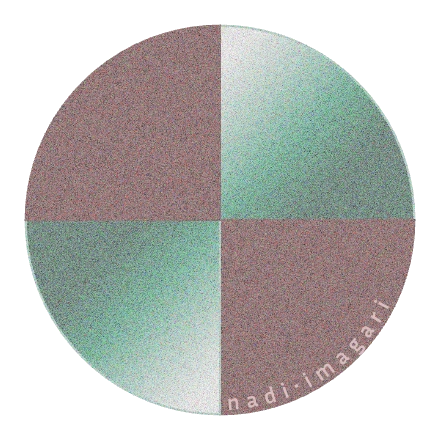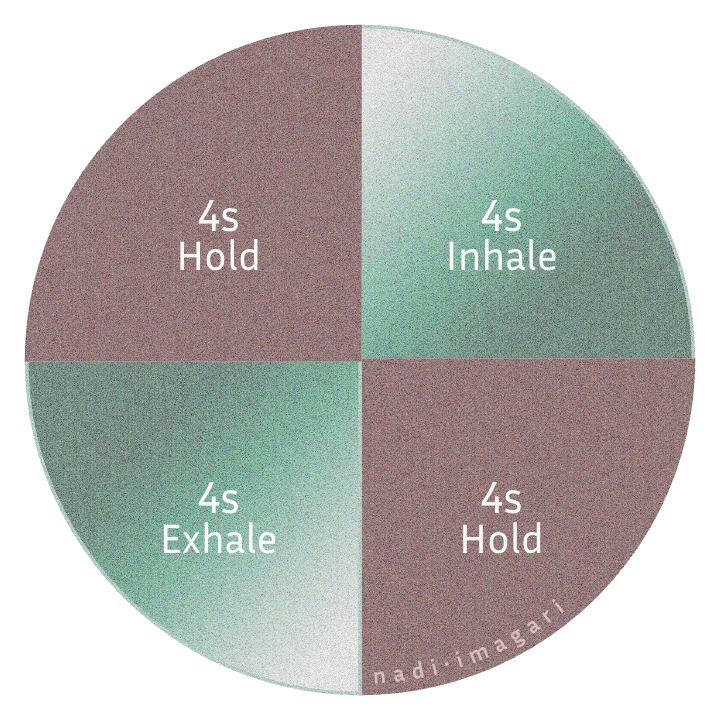Nadi Shodhana

Overview
Section titled “Overview”Nadi Shodhana, also known as Alternate Nostril breathing, is a classic yogic pranayama used to balance the nervous system and clear subtle energy channels (nadis). “Nadi” means channel, and “Shodhana” means purification—this breath is meant to cleanse and harmonize the body and mind.
It’s especially effective for reducing stress, centering the mind, and preparing for meditation or sleep. Practicing Nadi Shodhana regularly brings a felt sense of mental equilibrium, like a reset button for emotional turbulence.
| Phase-by-phase | Time | How |
|---|---|---|
| Inhale | 〜4s | Close the right nostril, inhale through the left |
| Hold | 〜4s | |
| Exhale | 〜4s | Close the left nostril, exhale through the right |
| Hold | 〜4s | |
| Inhale | 〜4s | Inhale through the right then cover it |
| Hold | 〜4s | |
| Exhale | 〜4s | Exhale through the left |
| Hold | 〜4s |
Continue for 5–10 rounds, breathing slow and smooth.
The breath should be gentle, even, and without force. In this technique the rhythmic precision is less important than ease and awareness.
Effects & Benefits
Section titled “Effects & Benefits”- Balances the left and right hemispheres of the brain
- Reduces anxiety, agitation, and emotional swings
- Promotes mental clarity and stillness
- Clears energetic blockages in yogic subtle body systems
- Supports parasympathetic activation (rest and digest)
- Enhances focus before meditation or creative work
The alternation brings both stimulation and calm in harmony—unlike techniques that only energize or only soothe.
Getting Started
Section titled “Getting Started”Sit comfortably with a tall spine and relaxed shoulders.
Use your right hand, thumb to close the right nostril, ring finger to close the left. Middle and index fingers can rest on your forehead or curl in. You can close your eyes. Keep your breath soft and even. No force or strain.
- -Inhale 4sThrough the left nostril
- -Hold 4sYour breath
- -Exhale 4sCover your left nostril and slowly exhale through your right one
- -Hold 4sWith empty lungs
- -Inhale 4sThrough the right nostril
- -Hold 4sYour breath
- -Exhale 4sCover your right nostril and slowly inhale through your left one
- -Hold 4sWith empty lungs
- -Repeat5–10 times

imagari.me/nadi
When to Use
Section titled “When to Use”- Before meditation, study, or creative work
- To ground yourself after emotional upset
- When feeling mentally scattered or overstimulated
- As a transition into sleep
- In the morning to set a balanced tone for the day
This is a balancing practice—neither overly activating nor sedating. It’s gentle enough for daily use and especially helpful during moments of internal imbalance.
If one nostril is blocked, breathe gently or practice simple awareness of the breath until it opens. Try not to force airflow.